 |
 |
| A TSUBA SIGNED "BUSHU EDO JU YASUCHIKA & KAO" ROBERT E. HAYNES |
 |
 |
When you have been a student and collector of kodogu for seventy years, as I have, there is still that faint hope that something will appear that you have never held in your hand before. That did happen to me very near my eighty-fifth birthday, and what a birthday it proved to be! I had received the usual fall season New York Bonhams auction catalog. This time it was the sale of part of the collection of Paul Goodman, a collector and student of many years. I had not seen or spoken to Paul in more than twenty years. I had never visited him to see his collection and had thought of him as primarily a collector of arrow points. His sale catalog had the usual "pools of black" for illustrations of the tsuba for sale. I could just barely make out a signature on one of the lots, number 76. I dismissed this lot and the catalog as not having anything of interest for me. Revisiting the catalog, I now believed I wanted to bid on lot number 76. You can see the lot as it was presented in the catalog. (Illus. 1) What with the typo of Bushu as Busshu I thought that this might be the find of my lifetime, as it has proved to be! I immediately started going through various books in my library to confirm my thoughts about this tsuba. The four or five major books I consulted all confirmed that what I thought and saw had to be true, naturally I would not be sure until I owned the piece and had it in my hand for close inspection. I sent in my bid slip and waited for the day which was October 20, 2015, at about 7:30 A.M. my time. I was bidding by phone. I also bid on the lot before the Yasuchika, but was only mildly interested and did not get the lot. When the bidding started on the Yasuchika I only had time to say “YES” twice before the lady on the phone said that the lot was mine. When I was able to breathe again, I realized I had gotten it at the reserve price and it would seem that no one had been bidding against me. Was this great luck for me and great foolishness for all others? It would seem that way. I stayed on the phone for a few more minutes. Lot 77, a fully signed tsuba by Ichinomiya Nagatsune at the age of 61 was of interest as I had sold it in my sale number 10 and it was illustrated on the front and back cover of my catalog, it brought $7,500, which was double the estimate in my sale of 31 years before. It was to be two weeks before having my tsuba in hand due to the usual shipping mess Fed Ex created, which the very good people at Bonhams finally sorted out for me. It was just after my birthday and what a present I had given myself. In hand I could see that this was perhaps the most important tsuba I had ever owned in my seventy years of collecting. I immediately began an intensive research of the tsuba and consulted all the books I could find that added information to this study and its research, which I shall put before you now.
The three major books I have consulted are as follows:
Nagaoka Tsuneyoshi: SHONAI KINKO NO KENKYU, Tokyo, Yoshikawa Kobunkan, 1933. This book was the major source for the study of the artists of the Shonai area when I began my studies, unfortunately it does have a number of errors and not all the illustrations are to be relied on. Also it is almost as old as I am!
Miyazaki Tomijiro: YASUCHIKA, Tokyo, Sansaisha, 1964, 1,000 copies. I knew Mr. Miyazaki and he was working on this book when I went to see him with my teacher Dr. Torigoye. I was able to see all the illustrated pieces in Mr. Miyazaki's collection. This book with its English translation is a very fine work.
Sato Kanzan: SHONAI KINKO MEISHAKU SHU, NBTHK Shonai Branch,1966, This work covers most of the Shonai artists and the section on Yasuchika has some valuable information not contained in other books. Around 1970 I was able to buy a number of the pieces in this book. Unfortunately I do not have them now. It is interesting to note that these three books are the source material concerning Yasuchika and the youngest of them is 50 years old! They are by far not the only books I consulted, naturally one would expect to see the Tagane no Hana on such a list, but that book, with the "Nara Sansaku" volume being the one of interest.
Mitsumura Toshimo: TAGANE NO HANA, Kobe, Ryushido, 1903-07, 500 copies. Unfortunately there are so many problems with this work that one cannot rely on all the information it contains. Also there are no illustrations of the signatures of the fuchi¬kashira or kozuka. Most of the pieces of interest are now illustrated in the above volumes, often in color. I also looked through all the Henri L. Joly books and found one gem, more of that later.
There is one other book that should be mentioned in passing. Fukushi Shigeo: TOSOGU - MACHIBORI - MEIHIN SHUSEI, Tokyo, Inose Insatsu, 2005, 700 copies. Though this is the latest book to contain a section on Yasuchika, its main claim to fame is the fine quality of the color illustrations, and the fact that he has added the fuchi-kashira to the early shakudo plate tsuba showing them as a set, but with no further information.
It is very sad that the books produced in Japan are not definitive works. There is a reason for this. Most of these authors illustrate material from the collections of their friends. It is very difficult to show pieces from collections of persons that you do not know. But all authors in Japan have to contend with those "secret" collections that are closed to almost everyone. A truly definitive work would have to contain ALL the known examples by a given artist, not just those that are available to the author. That is why it is so difficult for students like myself to study a subject, such as I am trying to do in the case of the early Edo works of Yasuchika. That is why I need the help of all and anyone who might have additional information that can be added to what you will read in this paper. All comments and corrections will be of great help if we are to understand this subject fully.
I have decided to approach this subject from a chronological point of view. I shall try to layout the life and works of the first Yasuchika as his years go by. Thanks to the research of Mr. Miyazaki and others we have a fairly clear idea of the time line of his life.
1670, the year of the dog. Yasuchika is born at Shonai in Dewa Province. Later the name of Shonai was changed to Tsurugaoka, and Dewa was divided into Ugo (upper half) and Uzen (lower half) with "Shonai" on the new border of the two new Provinces in Uzen. From 1622 to 1868 it was the residence of the Sakai daimyo (145,000 koku). Now we must go into the history of the Sakai family. The Sakai came from the Mikawa area and are descended from Minamoto Arichika. He had two sons, one, Chikauji took the name of Sakai, and the other, ![]() took the name of Matsudaira, which was authorized by Tokugawa Ieyasu, who also came from Mikawa. His original family name was Matsudaira. It is interesting to note that the father of Yasuchika, who was Tsuchiya Chuzaemon, who seems to have been a low grade samurai retainer of the Sakai, might have named his son after the ancestor of his Daimyo, though they had different first kanji in their names, the sound was the same. From this we see that the later patronage of Matsudaira Daigaku no To Yorisada was born from the Sakai and Matsudaira relationship. The early years were spent as a trainee for the samurai status he was expected to have. It seems his father saw a talent in the youth and decided that he should be apprenticed to a metal work artist rather than being trained as a soldier.
took the name of Matsudaira, which was authorized by Tokugawa Ieyasu, who also came from Mikawa. His original family name was Matsudaira. It is interesting to note that the father of Yasuchika, who was Tsuchiya Chuzaemon, who seems to have been a low grade samurai retainer of the Sakai, might have named his son after the ancestor of his Daimyo, though they had different first kanji in their names, the sound was the same. From this we see that the later patronage of Matsudaira Daigaku no To Yorisada was born from the Sakai and Matsudaira relationship. The early years were spent as a trainee for the samurai status he was expected to have. It seems his father saw a talent in the youth and decided that he should be apprenticed to a metal work artist rather than being trained as a soldier.
1683, the year of the boar. At the age of 13 he is said to have been apprenticed to Sato Yoshihisa (Chinkyu) H 11638.0, we do not seem to have the birth and death dates for Yoshihisa, but we can guess that he was born about 1620-30 and was a mature artist when Yasuchika became his student. Watanabe Arichika H 00110.0, the good friend of Yasuchika, was also a student of Yoshihisa, more of this later. He was fortunate in his teacher for Yoshihisa was trained in the Shoami and the Nara school styles, a combination that gave the young student a very wide area of techniques and styles.
1690, the year of the horse. At the age of 20 Yasuchika has been a student for at least 7 years and showed such talent, that his teacher thought of him as family and he was to use the name of Yagohachi, and he was to marry the daughter of Yoshihisa. Shortly after, he was to become an independent artist and went out on his own and set up his shop, at which time he was to begin the use of the name of Yasuchika as his art name. There is one tsuba that is signed by Yasuchika at this time period. See Miyazaki: YASUCHIKA, page 4 & 5, B. & W. photo number 1. (Illus.2) This tsuba is also reproduced in the Nagaoka: SHONAI KINKO book as plate 69. (We shall come back to this tsuba later in this paper.) A very nice tsuba for a young student but it does not show the brilliance of his work after he went to Edo. This tsuba is signed: SHONAI, on the upper right, and YAGOHACHI on the lower left of the seppa-dai, a very strange sort of signature. Such a signature sounds more like Yagohachi is a place in Shonai and not a person from Shonai. It is not signed: Shonai JU Yagohachi SAKU, meaning I live in Shonai and have made this tsuba by myself, which is what one would expect of a young apprentice who might be signing for the first time. In addition to this Yasuchika was to use the Yagohachi name on pieces he made in Edo and also passed the name onto the second Yasuchika. As far as I can tell this is the only recorded signed example by Yasuchika from his days in Shonai. He had been making fittings in Shonai for about 20 years., So where are all the other pieces that he must have made during this time, which is a full third of his lifetime of work? There are a large number of unsigned works attributed to him at this time but no proof that he made any of them. This is doubly strange since when we see his first fittings he made in Edo, he was a fully mature artist of great talent. There should be some examples that he made in Shonai with his equal ability and artistry. I hope someone can shed some light on this period. We shall have to leave the many mysteries of Shonai and move on, with Yasuchika, to Edo.
1703, the year of the goat. At this time it was very difficult to travel in Japan, for any travel outside of your province, and certainly any travel across the whole country, needed special papers from ones superiors for any such trip. It would seem that Yasuchika decided to make this journey for several reasons. It is said that his wife (Yoshihisa's daughter) had died and he could leave his eight year old son, who was to become the second Yasuchika, in the care of his father-in-law, Sato (Chinkyu) Yoshihisa. There seems to be another reason that Yasuchika wanted to go to Edo. He felt that his talent and future as an artist would be wasted in such a small castle town as Shonai and that he wanted to be with the "great" artists in Edo. Naturally not ALL the great artists were in Edo, in fact there were many highly important fittings being made in the provinces. But Yasuchika was ambitious and proud. He could only see his fortune being made in Edo. How Yasuchika made this trip does not seem to be known. It would seem that he would have to WALK the majority of the way. The other possibility was that he went with his master, the Sakai daimyo on the biannual sankin-kodai trip to Edo. Any such trip would require that the traveler pass through the provinces of Uzen, Echigo, Shinano, Kozuke, and Musashi to reach Edo. They would also have to go over the mountain spine of the northern part of Honshu, a very long and dangerous journey. Yasuchika on this trip probably stopped at Nagano in Shinano Province. There he might have stayed at the Suwa Shrine at Takashima, which is why he came back to this shrine about three years later. More of this when we get to the year 1706. He was 34 years old at this time and he had another forty years of artistic production ahead of him. When he finally arrived in Edo he was to contact Tsuchiya Hanbei. We do not know their relationship but it must have been close as Yasuchika was to live in the Kanda section of Edo where Hanbei had his home. The other person of note at this time is Nara Tatsumasa H 09488.0, who is recorded as the "teacher" of Yasuchika in Edo. He did not need a teacher at this stage of his life, and it is much more likely that Tatsumasa was his comrade and friend.
1703 to 1704, the years of the goat and monkey. The year 1703 was the end of the Genroku era, which began in 1688. The Genroku era was the high point of the entire Edo period. Great artists in many fields produced important works and the luxury of that time is well noted. Shakudo was everywhere, as was gold decoration, since it took from 3 to 8 percent of gold to make the best color of shakudo one can see that it was important for a artists during these times to be able to work in shakudo plate. Besides the shakudo used by the Goto artists as a natural part of their art, such schools as the Akao of Echizen and the Daigoro of Kyoto made most of their sukashi tsuba of shakudo. It is said that during this year Yasuchika produced the very famous tsuba and fuchi-kashira set of round shakudo plate with the design of the "8 Views of Omi". The best color illustration of this set is to be found in the Fukushi book (see citation above) MACHIBORI - MEIHIN SHUSEI, 2005, page 119 top, with part English translation. (Illus.3) This tsuba is a revelation considering it is thought to be his first work in Edo. It is signed: Bushu ju Nara Yasuchika saku, and signed on the reverse: hakkei dosaku, which means that there are companion pieces to this tsuba, a fuchi-kashira set with additional scenes of Omi. The fuchi-kashira are signed: Yasuchika: koshimoto dosaku, which means they are a set with the tsuba. Again we have a problem with the signature. Why did he sign as Nara? His lone affiliation with the Nara family was his association with Nara Tatsumasa, so this signature might be a "thank you" to Tatsumasa for his assistance in the making of this tsuba and fuchi-kashira. This set was most probably made to order, but we have no idea who it was made for. This tsuba shows a combination of the styles of the Shoami and Nara schools, which Yasuchika had learned from Yoshihisa. The design subject is taken from the Lake Biwa area and the eight views, Omi Hakkei, are as follows. 1, the autumn moon at Ishiyama; 2, the evening snow at Hira-yama; 3, the setting sun at Seta; 4, the evening bell of Miidera; 5, the boats leaving the port of Yabase; 6, the sky and breeze of Awazu; 7, the night rain at Karasaki; 8, the wild geese alighting at Katata.
1704 & 1705, the years of the monkey & cock. It is very fortunate that we still have this tsuba and fuchi-kashira. The owner must not have lived in Edo or was not there in these two years. In 1704 and again in 1705 there were disastrous fires in Edo. We know that the residence of Tsuchiya Hanbei and that of Yasuchika were burned in the great fire. Yasuchika seems to have saved the tools of his trade but what else we do not know. In any event Yasuchika felt that it was better if he left Edo all together. This was the time that we can guess that he returned to the Suwa Shrine at Takashima in Shinano Province. This area was the home of Suwa Yoritada (1536-1606), 30,000 koku, and his descendants till the restoration. He was to live about two years at the shrine area and during that time he produced a lock that was used on the main sanctuary of the shrine building. See; Miyazaki: YASUCHIKA book page 22 for a color illustration of this lock and its key, also see pages 130 and 131 for the photo of the signature on this lock, (Illus. 4-5). We have no record of why he made this lock but we can guess that it was in payment for the board and lodging at the shrine. The lock is boat shaped, and is decorated with the mon of the shrine and is carved with hair lines to represent the waves of the sea. The lock was gold plated but most of the gold has worn off. The lock is dated: Hoei 4, June on a lucky day (1707), and is signed: Tsuchiya Yagohachi bori kore. There is also another inscription saying that the lock was repaired in 1826. It is important to note that as far as we know this is the only dated work by Yasuchika. Mr. Miyazaki did extensive research concerning this lock but was not able to gain any more information as the records of the shrine had been destroyed in a fire shortly after this time.
1707, the year of the boar. Tsuchiya Hanbei seems to have died at this time and Yasuchika returned to Edo. He may have lived in the home of Hambei, but he did return to the making of tsuba and other fittings.
1708, the year of the rat. It seems that this unique example of the many tsuba by Yasuchika was made at this time. No other shibuichi katakiri style work has been found so far. It would
seem that he could use shibuichi plate because it was far cheaper than shakudo and the katakiri style design did not require gold and silver inlay. Yasuchika having just returned from the Suwa Shrine probably could not afford shakudo and he wanted to reestablish his reputation in Edo, so this style of tsuba was his best bet. See; Miyazaki: YASUCHIKA book pages 12 & 13 for this tsuba. (Illus.6) Katakiri carving on shibuichi plate was very popular and the Yokoya school made many fittings in this style, but human figures are very rare in their work. This example with Daitoku, Hotei, and Fukurokuju, all gods of good fortune, may have been chosen with his own good fortune in mind. It is signed: Tsuchiya Yagohachi, upper right and Yasuchika with kao, lower left on the seppa-dai. Because this signature is so similar to that on the lock he made at Suwa it is thought he made this tsuba as the first one after his return to Edo. It is said that he made the tsuba with Juro and tortoise design as his next work after the one above. See Miyazaki: YASUCHIKA page 10 & 11, also see Fukushi: MACHIBORI book page 118, (Illus. 7) with the matching fuchi-kashira and other fittings. This tsuba is signed: Bushu Edo ju Tsuchiya Yasuchika and kao. The fuchi-kashira with the design of a kikujido is signed: Edo ju Yasuchika and kao. The signature on these fittings show us that Yasuchika was trying to tell all that he was now fully established in Edo and was able to take orders from all again, after an absence of about two years. This tsuba with its shakudo plate, and again the design subject of a figure of good fortune, completes the cycle of this period in his work. It would seem that the year of the rat (attribute of Daikoku) has been good to him.
The next three entries start a pattern that seems to have continued up to the time that he became the retainer of the Matsudaira family and are, as far as I can tell, not recorded in this fashion by other fittings students. The design chosen for the tsuba seems to correspond with the animal of the cycle year of the same period.
1709, the year of the Ox, or bull. See Sato: SHONAI KINKO book page 31, number 29 for a shakudo plate tsuba with the design of an ox. (Illus. 8) The animal is recumbent by a small tree next to a stream and large rock. The clouds in the sky are in sukashi and what is called kage sukashi, which is shadow or silhouette style. We shall come back to this style of design in the third tsuba in this series, and shall compare the clouds of these two tsuba. This tsuba is signed: Bushu Edo ju Tsuchiya Yagohachi Yasuchika and kao. This seems to be the most complete signature to be found on any work by Yasuchika, so far recorded. This tsuba is in the Tokyo Kokuritsu Hakubutsu kan, I have not held it in my hand but hope to do so in the future. This is the first of the next two tsuba that seem to have been made with the design subject of the zodiac animal of the same year. This might be conjecture on my part but the idea is not uncommon in many other fittings. The other thing of note is that all three of these tsuba are shakudo plate, all about 8cm. in size and with design characteristics that seem to overlap.
1710, the year of the tiger. See: Joly Henri L.: THE W. L. BEHRENS COLLECTION, London, 1913-14, 12 vol. in 3 boxes, 100 copies. (Illus. 9) See box three, fascicule III, page 94, number 2434 "Shakudo, large, with gilt rim, on one side a tiger, on
the other a dragon intaglio, signed Bushu no ju Yasuchika with kakihan". The location of this tsuba is unknown at this time. It is probably in a European collection, if it survived the war. It does seem to fit very well as the tiger subject is in the tiger year and the round shakudo plate "large", probably 8cm. all fit very nicely with the ox tsuba before and the hare tsuba that will come after. Of the almost three thousand pieces in the Behrens collection this might very well be the single most important object of the whole collection. I hope that someone might know where it is today and can tell us more about it. This tsuba I think will be my last "hunting job" for years.
Now we come to the tsuba that is the title of this paper and of which I feel that all should enjoy it as much as I do.
1711, the year of the hare or rabbit. (Illus. 10-11-12)
This tsuba which is the title of this paper, is of shakudo plate that is 8 cm. high and 7.9 cm. wide. It is signed: BUSHU EDO JU YASUCHIKA and KAO. The surface seems in various lights to have an almost iridescent quality about it. Though the plate seems polished it does not "shine" as most mid to late Edo period shakudo plates seem to do. It is quiet and subtle in color and tone. The round shape plate has an inlaid shakudo rim that does not go over the edges. This style of rim cover is to be seen in other shakudo plate tsuba of this time, and sometimes they are of gold. The design is of a hare in kage sukashi (silhouette sukashi), turned three quarters away so we see mostly the back of the animal. To its left are three sukashi sasa dwarf bamboo leaves, a dot of dew and a hart shape opening. Remember the first iron plate tsuba that was signed Shonai Yagohachi, it also has sukashi sasa leaves and dots of dew in kage sukashi, and a kogane mushi (May beetle) (see Illus. 2) in the kage sukashi technique. That tsuba may have been the inspiration for that type of sukashi in this case. Next to the bamboo leaves on the face are sasa bamboo leaves inlaid in two tones of shakudo, with gold flowers and other plants. A flower stock with nine shakudo leaves and a single silver bloom with a silver bud at the top, exits the bamboo leaves. This bloom is of the Rindo flower, or gentian (gentiana) often called the bell flower. The blooms of the Rindo are part of the family mon (crest) of the Matsudaira family. This seems to be the first indication that Yasuchika might be already working for Matsudaira Daigaku no To Yorisada (1663 to 1744), which would conform to the known information that he was a retainer of Yorisada in 1711 and received 12 koku as payment. The upper section of the plate has kage sukashi clouds and a half silver moon seen through the clouds, these clouds are very much like those in the preceding ox tsuba and when one lays one tsuba over the other the similarity is remarkable. Much of the right side of the face and the upper area just under the clouds of the right side have hair line carved lines that represent grass and this type of carved line we are told Yasuchika was very famous for. The sukashi areas are the same on the reverse naturally and the plate is carved with the same hair lines but they are on the center right and upper left this time. There are gold and shakudo plants under the hare sukashi and to the right of the bamboo sukashi are three and a half sasa bamboo leaves, also in two tones of shakudo, and with the dew dot and hart shape sukashi. Next to this is a kiku bloom stalk with nine shakudo leaves and two silver chrysanthemum blooms and one bud of silver at the top. This would seem to be some type of nod to the Imperial mon. The shape of the hitsu-ana are standard and classical to those used by Yasuchika at this time. This ends the physical description of this tsuba. The other factors that should be noted are the historical and aesthetic factors that relate to this tsuba. Its place in the history of Yasuchika and his production seems very clear when you realize this tsuba was made in 1711, the year of the hare, and the two pieces mentioned that are before this one also give us a good idea of the chronology of his work at this time in his life. Also of note that on April 25, 1711 the SHOTOKU era began, which may have given him added impetus to make this tsuba. Naturally there are a number of tsuba and other fittings that he must have made at this time that have not been recorded so far. We can only hope that some of them will come to light and thus will have an even clearer picture of this master artist. I only wish that we could have this much information about such schools as the Kaneie and Nobuie groups.
1712, the year of the dragon. This is said to be the official year that Yasuchika went to work for Matsudaira Daigaku no To Yorisada. He is said to have been born in 1663 which was the year of the hare as well. I wonder if the kage sukashi hare tsuba was made as a gift to Yorisada for his patronage of Yasuchika. It would be a wonderful piece of history if it were true. In any event Yasuchika was to work for Yorisada for several years and during that time he produced a number of tsuba and other fittings for him. These included the famous "daigaku" shape tsuba that was based on the DAI kanji. Many of the pieces that he made at this time are large powerful tsuba and most are signed, some in gold inlay with a kao that had a line under the kao design of his earlier days.
1713 to 1714, the year of the snake and the horse. These were the years of prosperity and great production. One cannot say for sure which pieces he made at this time except for the "daigaku" shape tsuba, but since the taste of Yorisada seems to have been for bold and powerful pieces, these are the ones that we might attribute to this period of his working life.
1715, year of the goat. This must have been a happy year for Yasuchika as his son was to come to Edo. He was now 20 years old and for at least the last seven years had been trained in the art of metal working by his grandfather, Sato (Chinkyu) Yoshihisa, who must have been an old man at this time as he had been the teacher of the first Yasuchika as well. It is said that he came to Edo with Watanabe Arichika (born 1661, died April 4, 1742), see H 00109.0, the very good friend of Yasuchika, but we have no more information about this. Unfortunately the life and times of the second Yasuchika are very much a mystery. He was to work along side his father for almost 30 years yet we can only guess at which pieces that were produced during these years that might have been made by the second master. He is said to have signed Yasunobu in his early years but even this is in dispute, and that signature is so very rare that we cannot compare it to his later examples. Kano Natsuo had a theory that those tsuba signed on the left side were by the second master, but we know that the first master signed on BOTH sides so this idea is wrong. It would seem that much of the study of these two masters should be concentrated on the second master.
1716, the year of the monkey. It is said that Yasuchika set up his own shop in Edo at this time. He would have had his son and probably other students to help him. One item of note: Yasuchika produced many fuchi-kashira in his early years but we find no kozuka signed with the Bushu Edo ju signature. This is very strange since he did make many kozuka in his mid to later years but where are any kozuka from his early years? Someone should make a study of this problem.
1723, the year of the hare or rabbit. There is a shakudo plate tsuba that has a hare inlaid on the face and the zodiac on the reverse that is signed just Yasuchika, in small kanji on the right center of the seppa-dai. See Miyazaki: YASUCHIKA, number 8, pages 20 and 21. (Illus. 13) It was thought that this tsuba was made in 1711, the year of the hare, but now we have my hare tsuba, so this one should be assigned to 1723. All of this type of chronology is important but very hard to prove.
1730, the year of the dog. Yasuchika was to retire this year as he was now 60 years old and had completed his life cycle. He took as his nyudo name that of TOU (east rain), why he chose this we do not know. He did not stop making fittings, in fact many important pieces are signed with the Tou name. There is one tsuba that most probably was made about this time, that of the elephant. It was May of 1731 when the ‘live’ elephant was brought over to Japan. This tsuba is signed: Yasuchika; center right on the seppa-dai. This signature would seem to be the cut off line between those pieces with the Yasuchika signature and the Tou signature.
1742, the year of the dog. This must have been a very sad year for Yasuchika as his very good friend Arichika was to die on April 4. It seems that Yasuchka was not in good health and had turned much of his production over to his son. It is said that he also gave him permission to use both the Yagohachi and Yasuchika names.
1744, the year of the rat. Yasuchika died this year on September 27. He was 75 years old using the Japanese birth dates.
1747, the year of the hare. The second Yasuchika was to die on February 1, 1747, at the age of 52. Thus we shall never know the full potential of this artist, as he died so young. This was only two years and about four months after the death of his father. He had spent almost all of his life as assistant to his father, rather than developing his own talent. We do not know the cause of this death but it does seem very sudden.
1778, the year of the dog. On May 3 of this year, the third Yasuchika was to die, at about the age of 58 to 60, in the same birth year as his grandfather. He had about 30 years of working on his own, and he must have produced many pieces but his work is very rare. He signed, for the most part Yasuchika, or rarely, Bushu ju Yasuchika, almost always in sosho kanji style. He had known the first Yasuchika for over twenty years and had probably been his student for at least ten of them. The majority of his work is very ordinary and does not come close to the quality of his grandfather. That does not mean that he could not do copies in the style of his grandfather but no one has identified any such work to this time.
Naturally there is still much to do in the study and research of the first Yasuchika and the two who succeeded him. It would be nice if a book could be produced that incorporated this information and all that is contained in several sources as well as new studies that could be taken up at this time, but that I leave to others.
Thus ends my chronology of the first three Yasuchika masters, as I have seen it and with my limited ability as an old man.
Illus. 1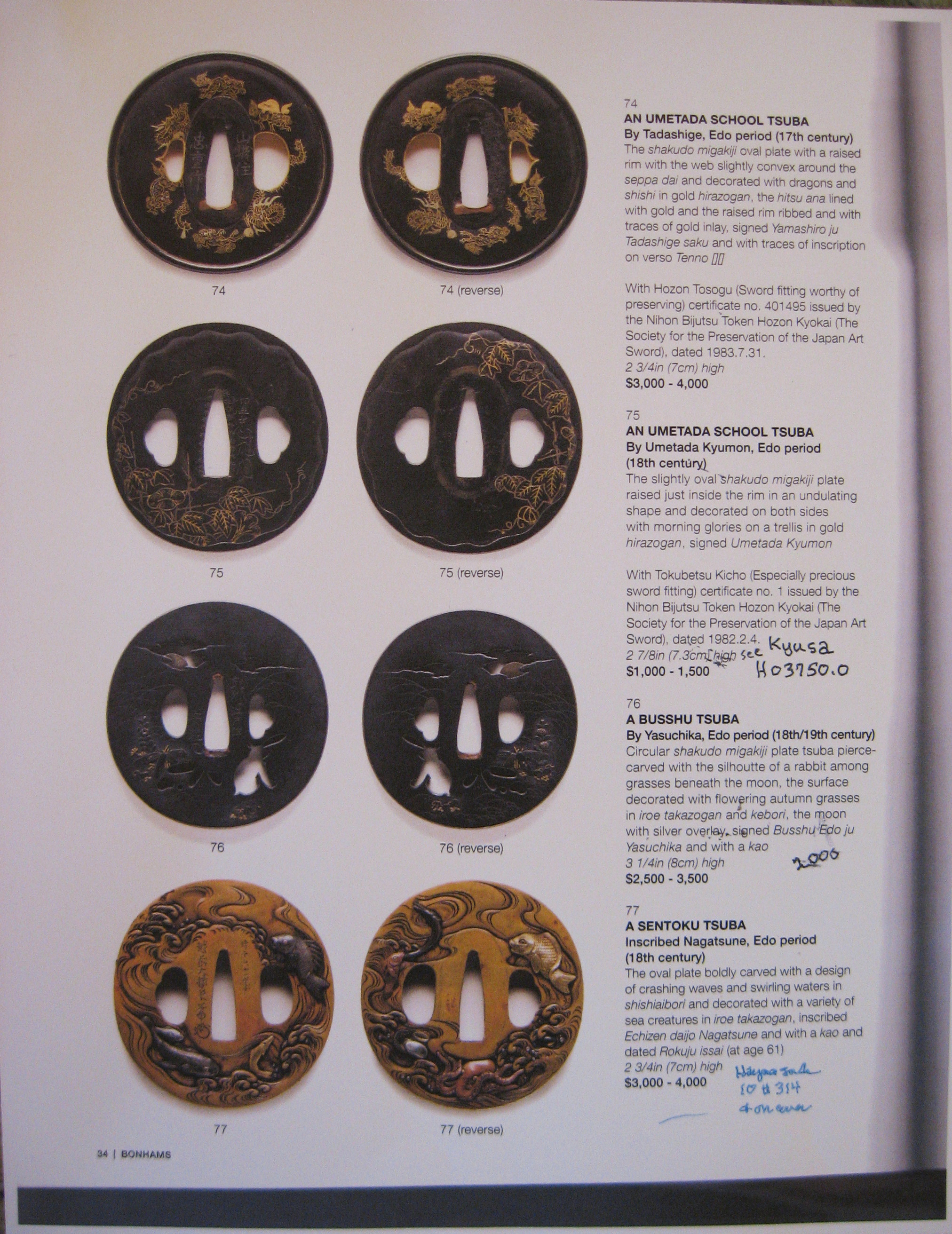
Illus. 2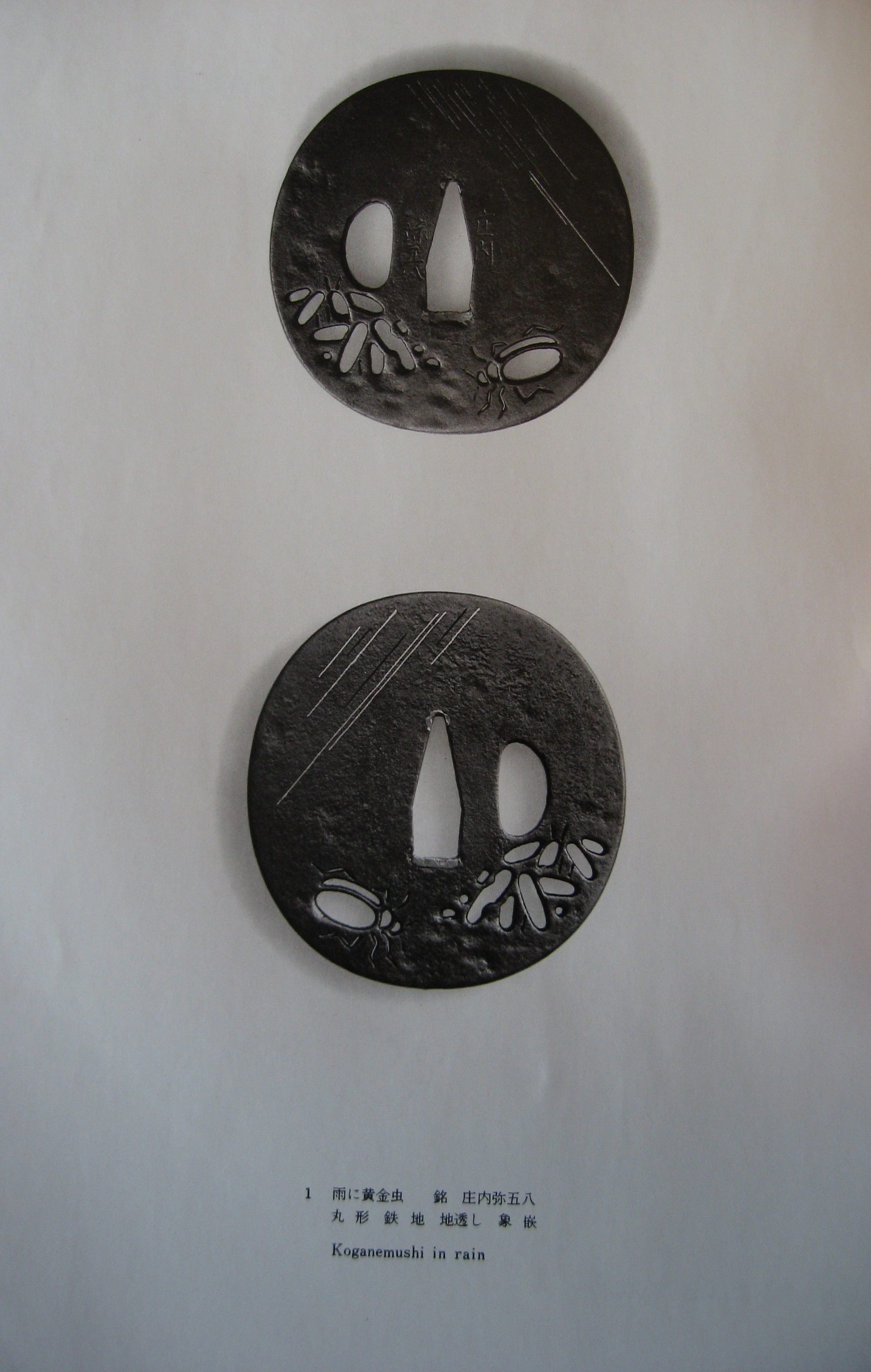
Illus. 3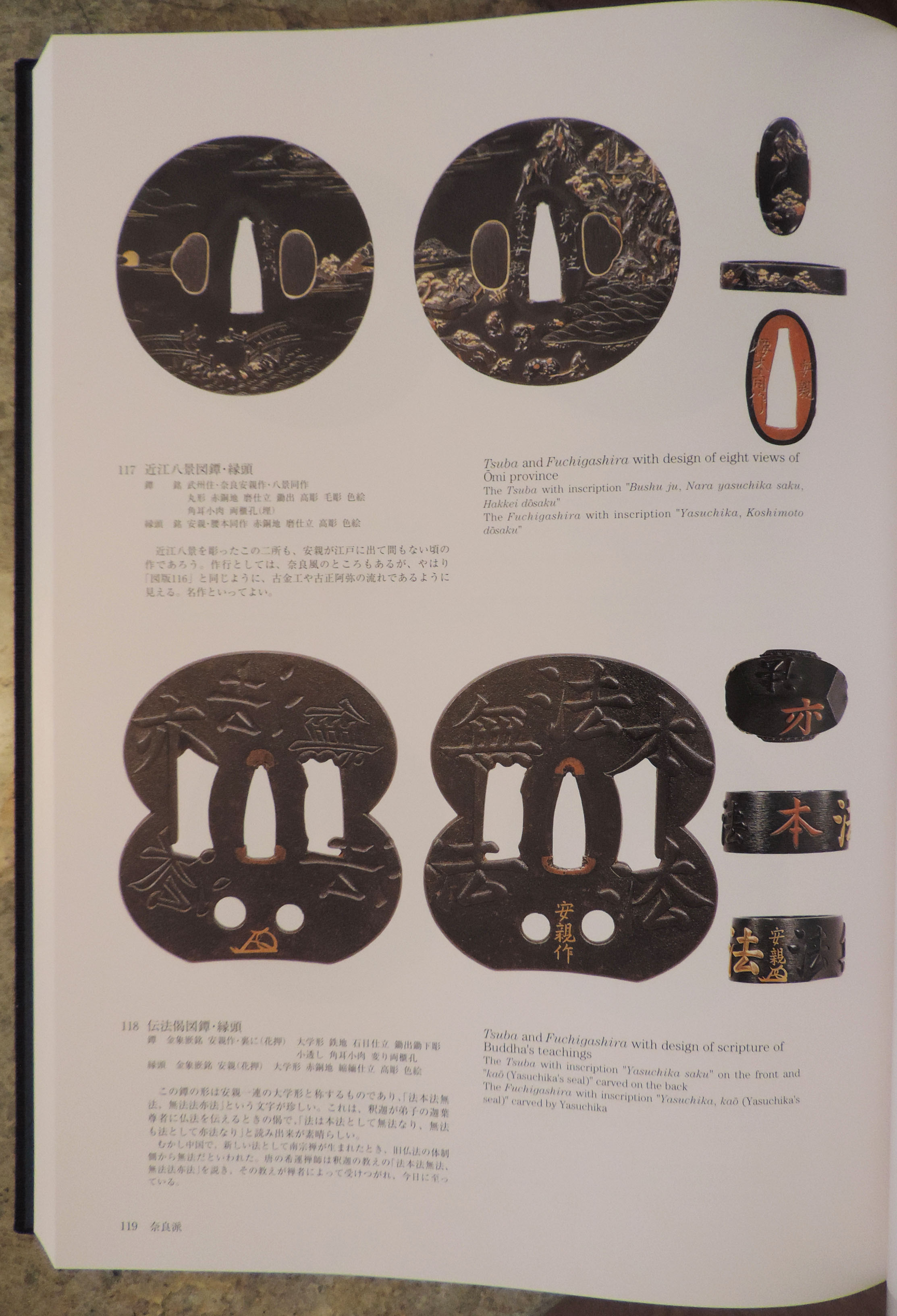
Illus. 4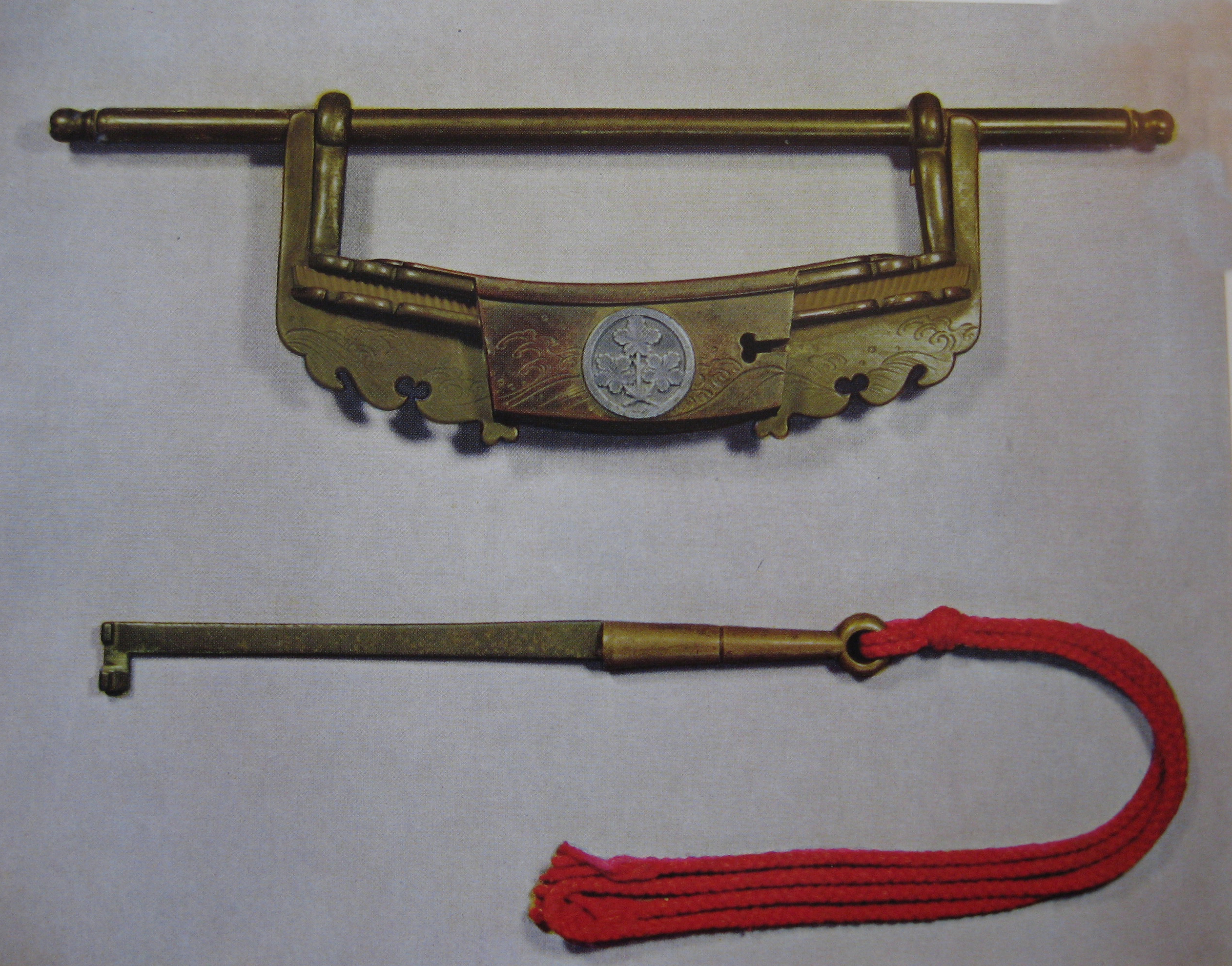
Illus. 5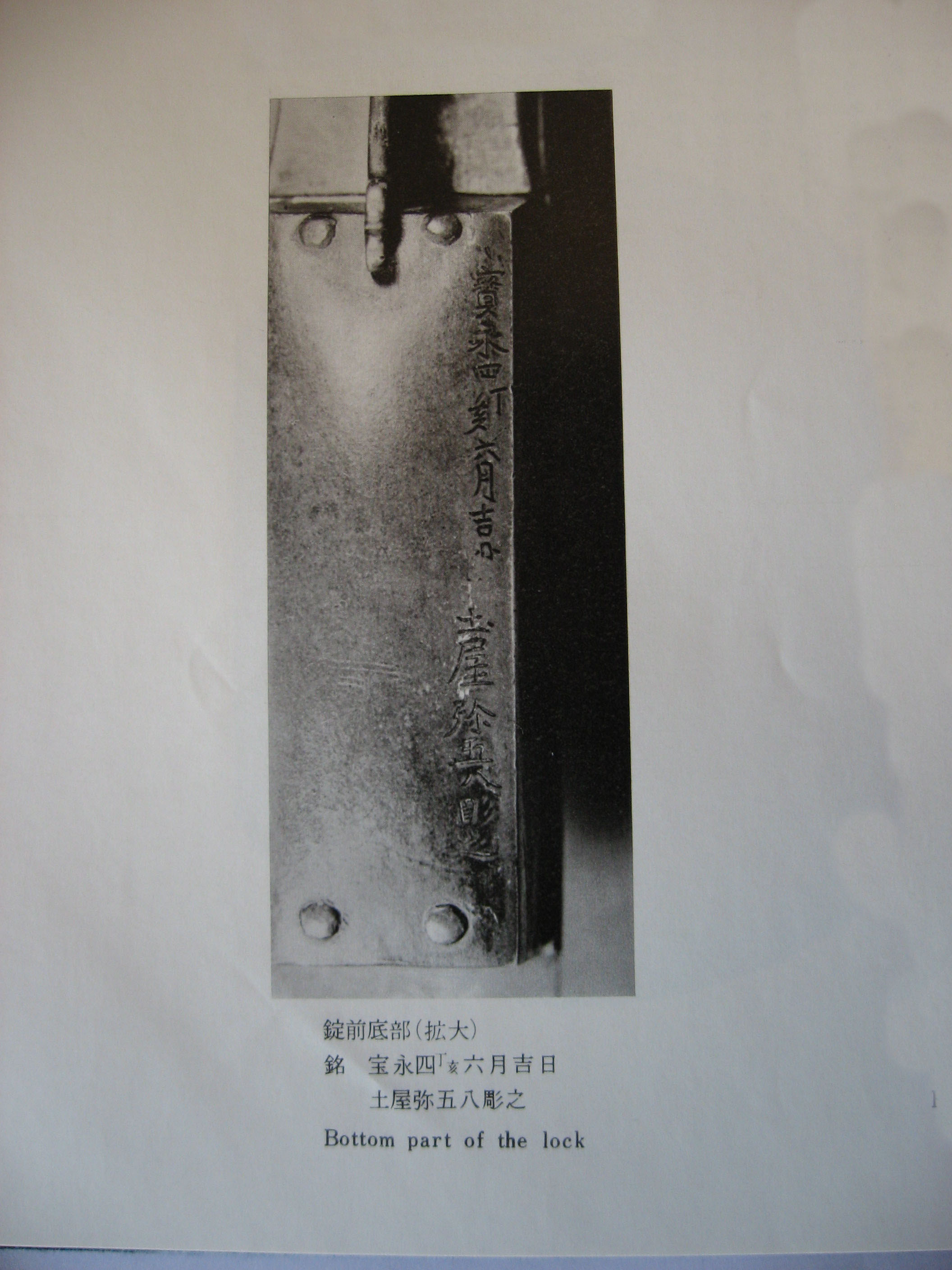
Illus. 6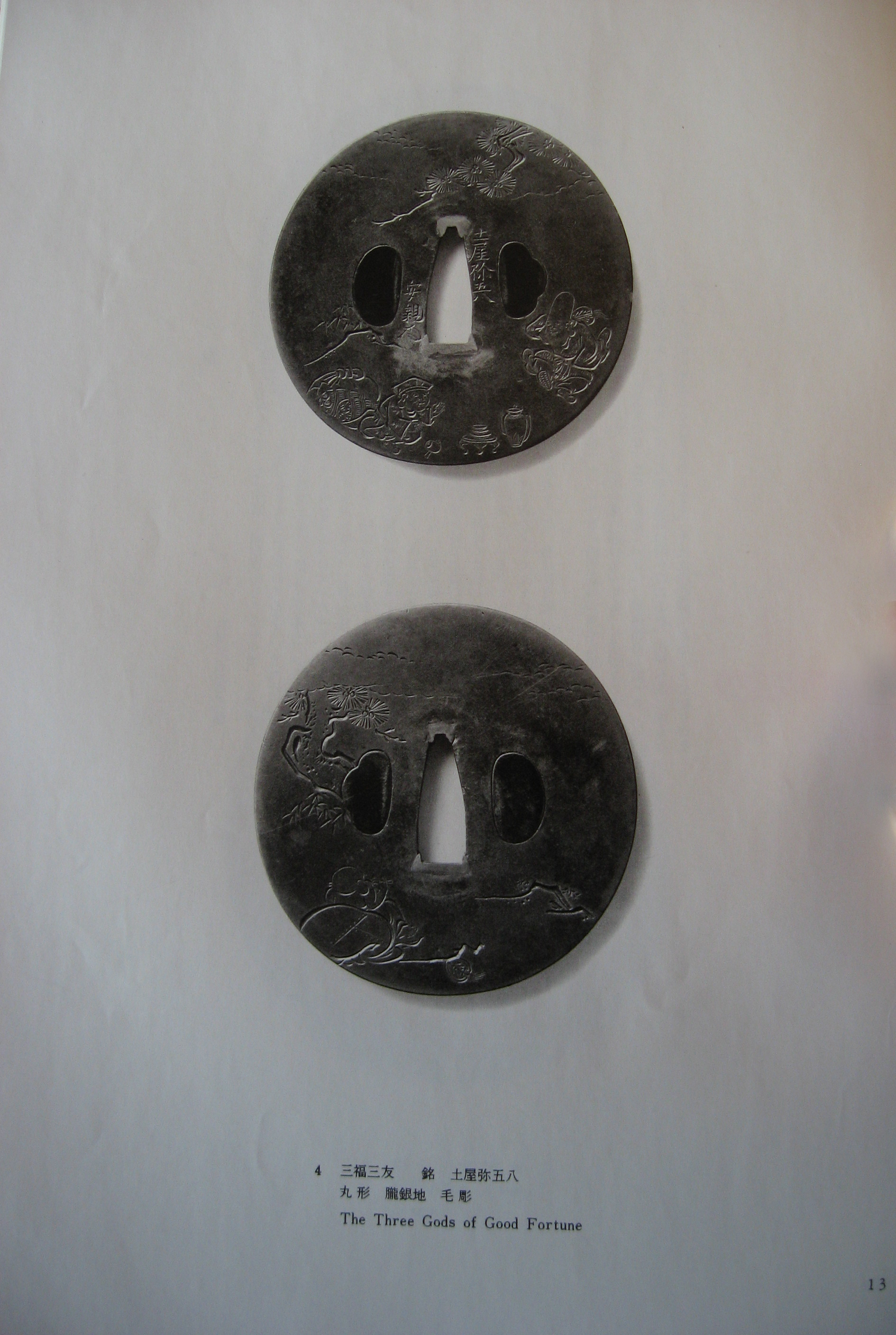
Illus. 7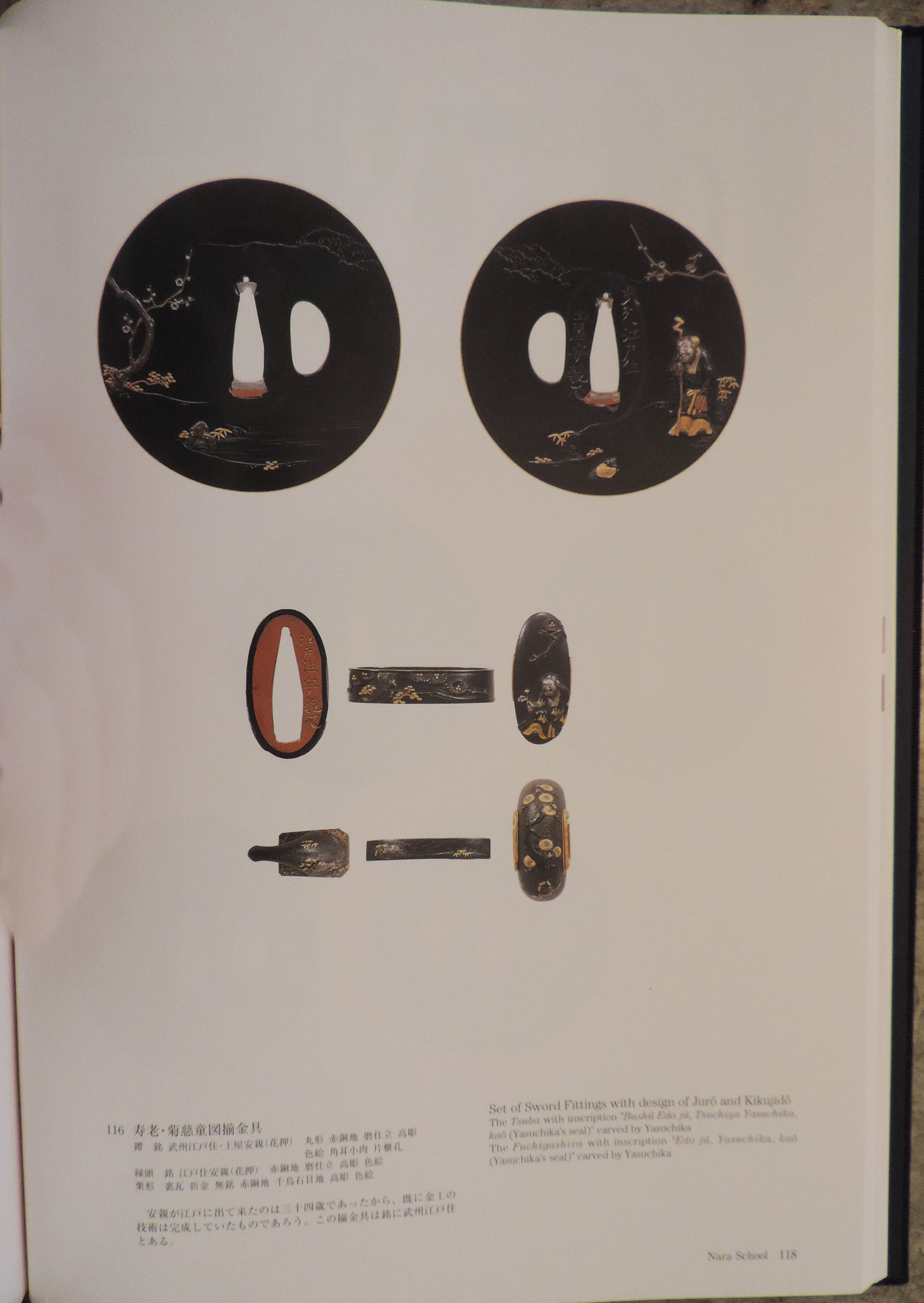
Illus. 8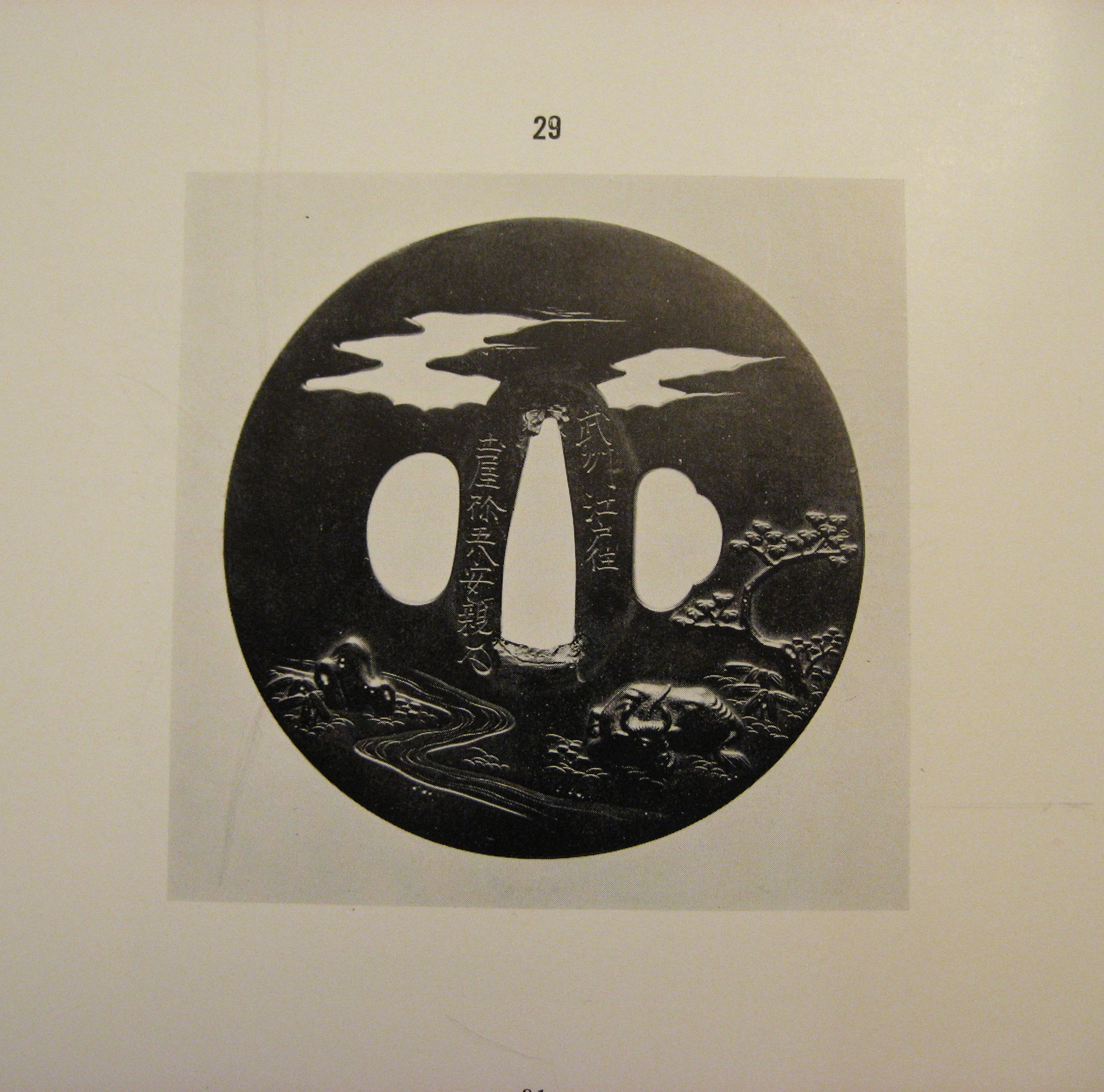
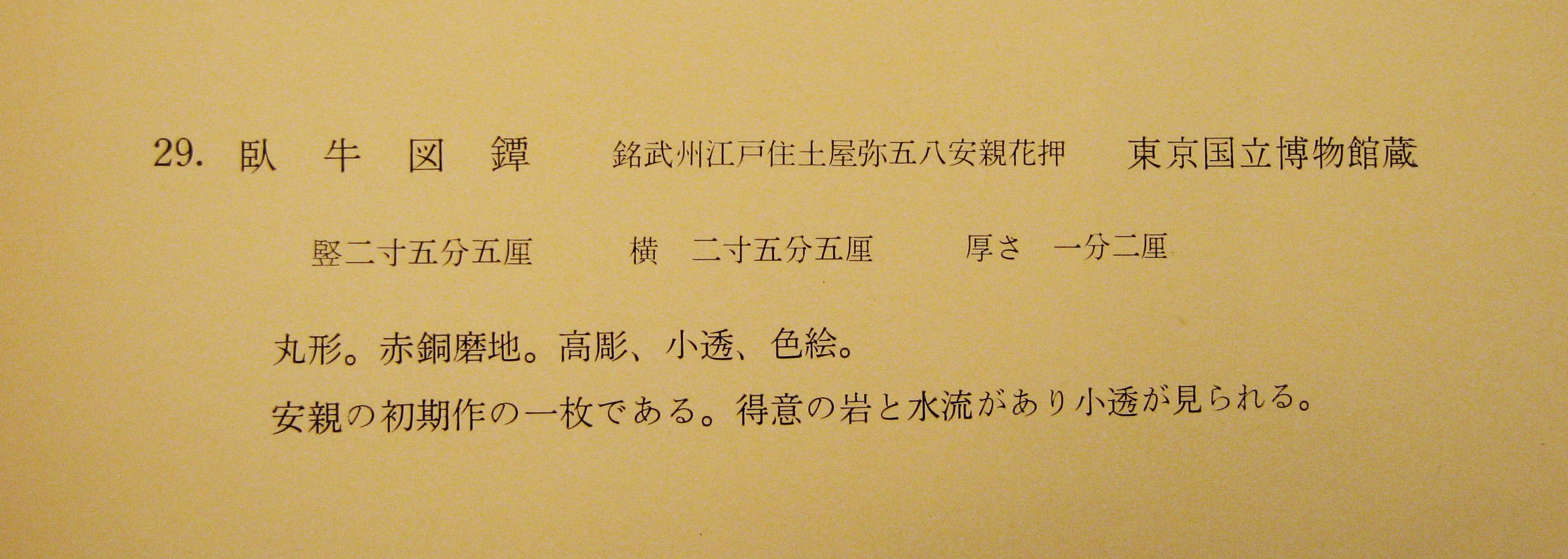
Illus. 9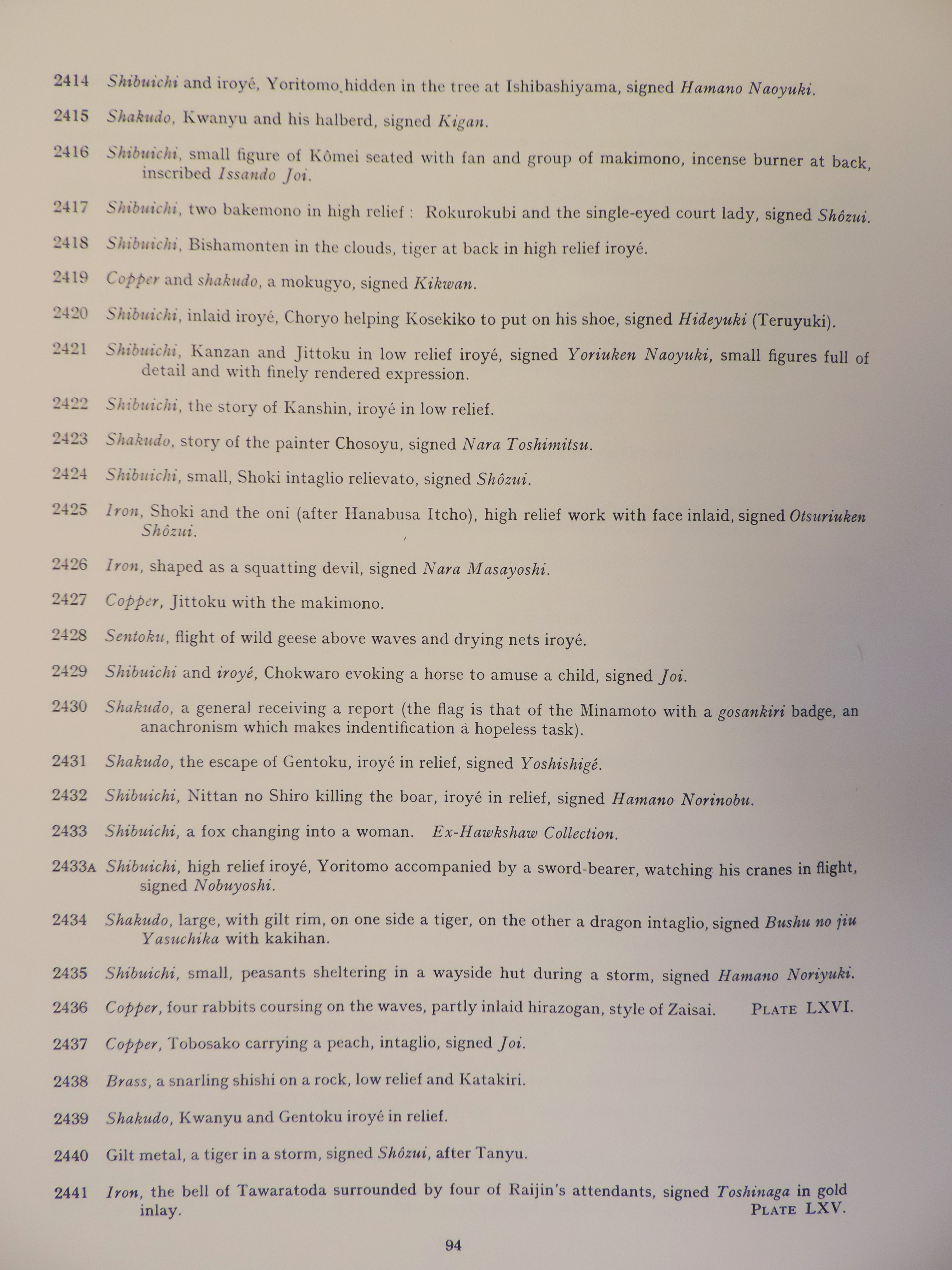
Illus. 10
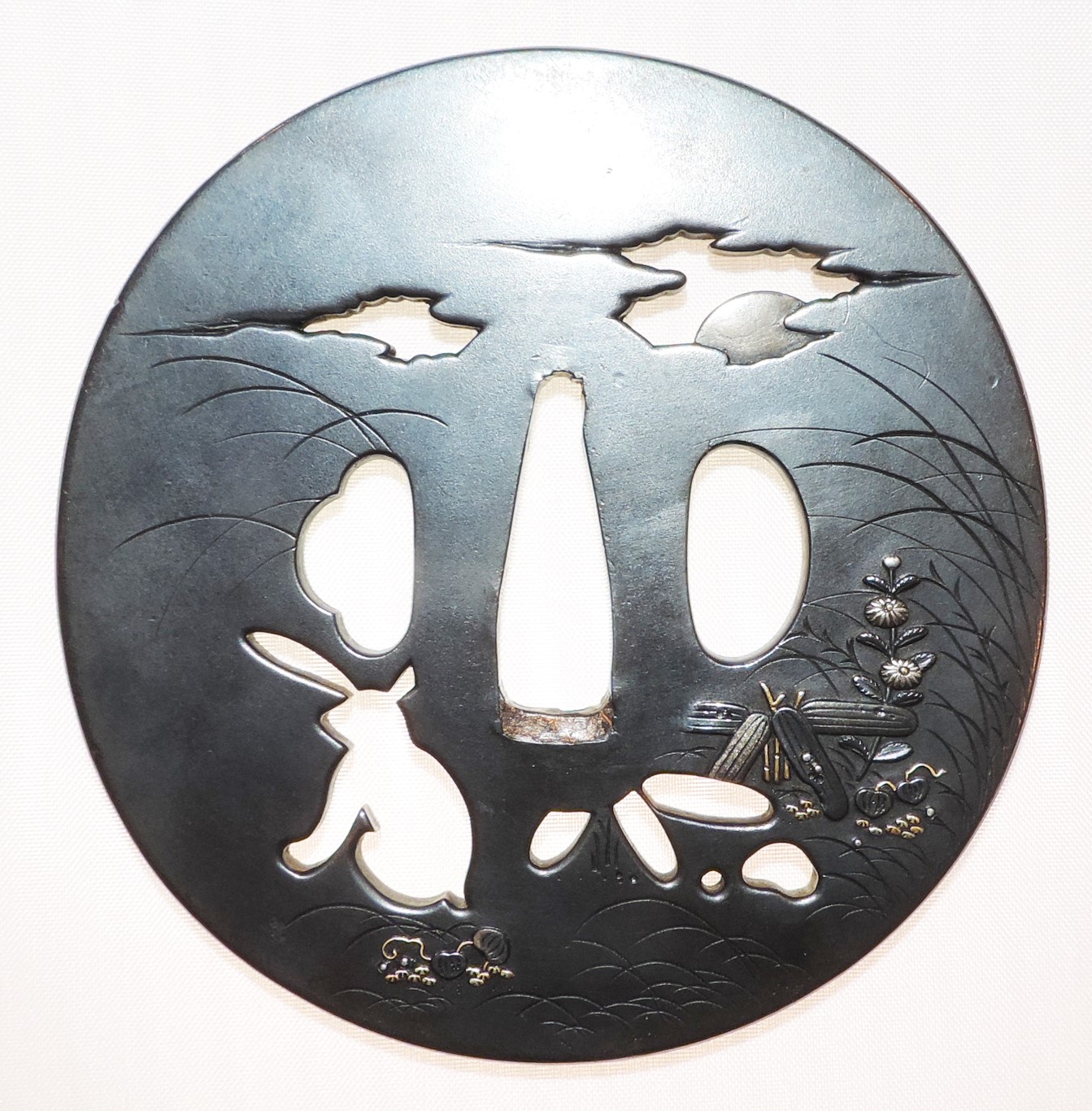
Illus. 11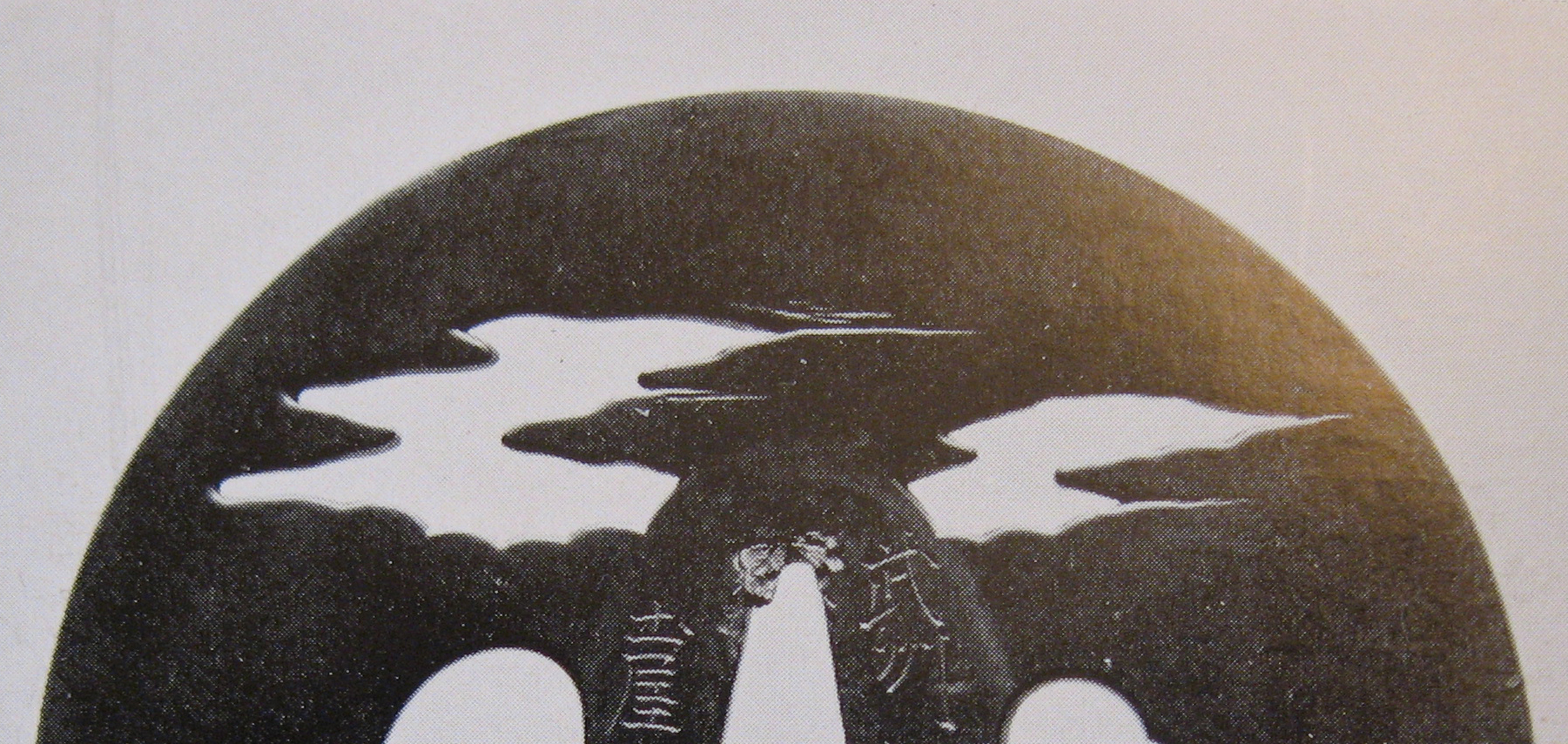

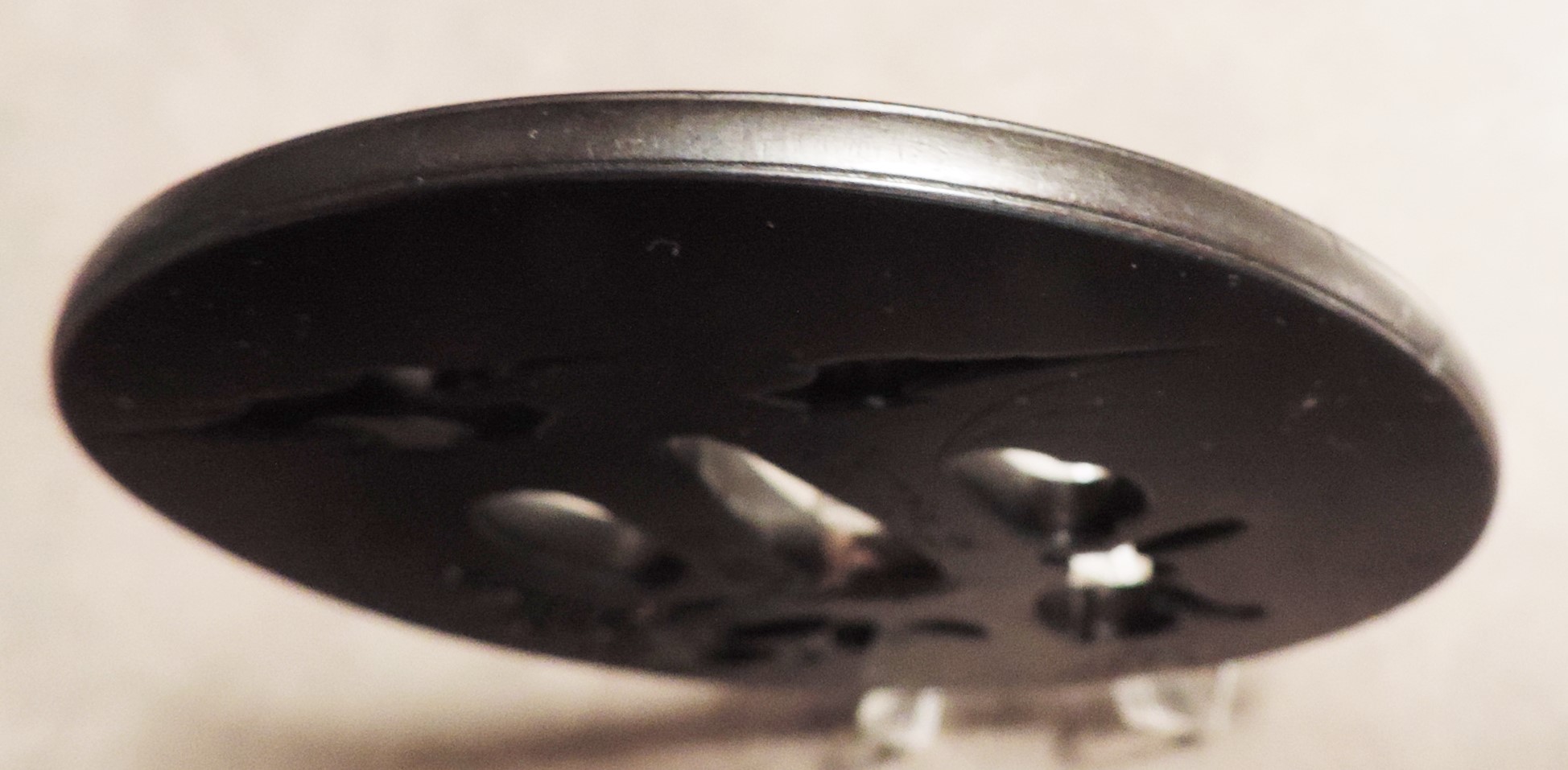
Illus. 12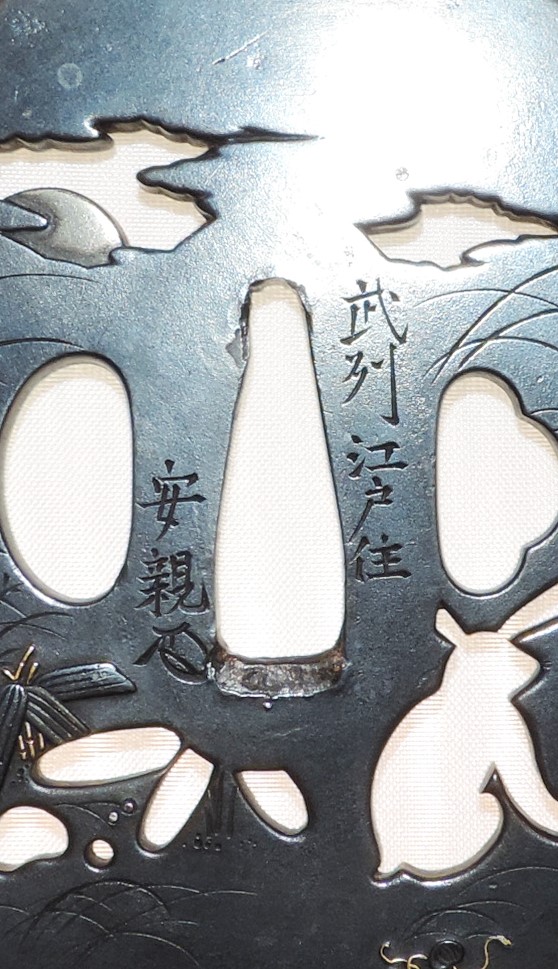
Illus. 13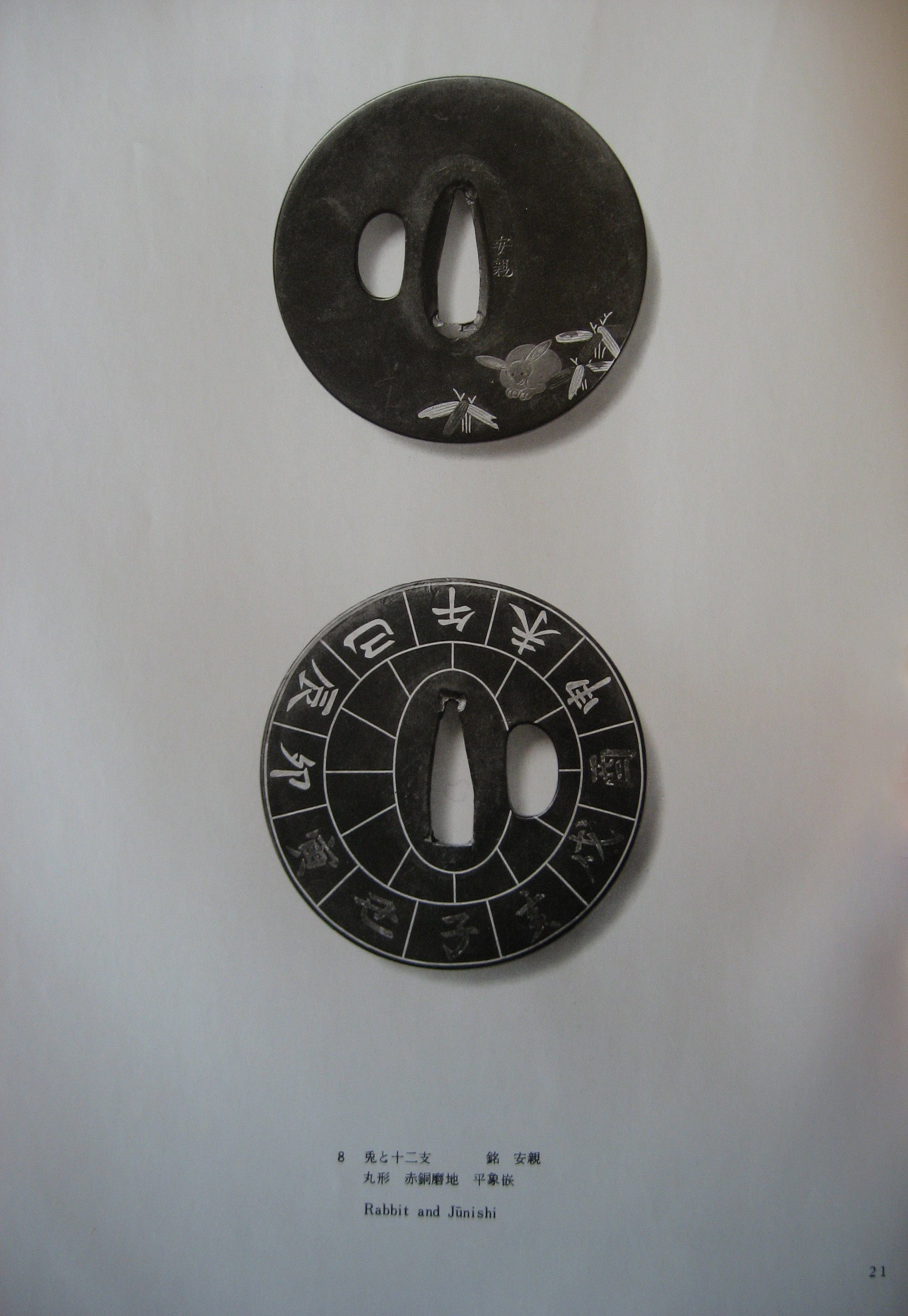
Other Study Images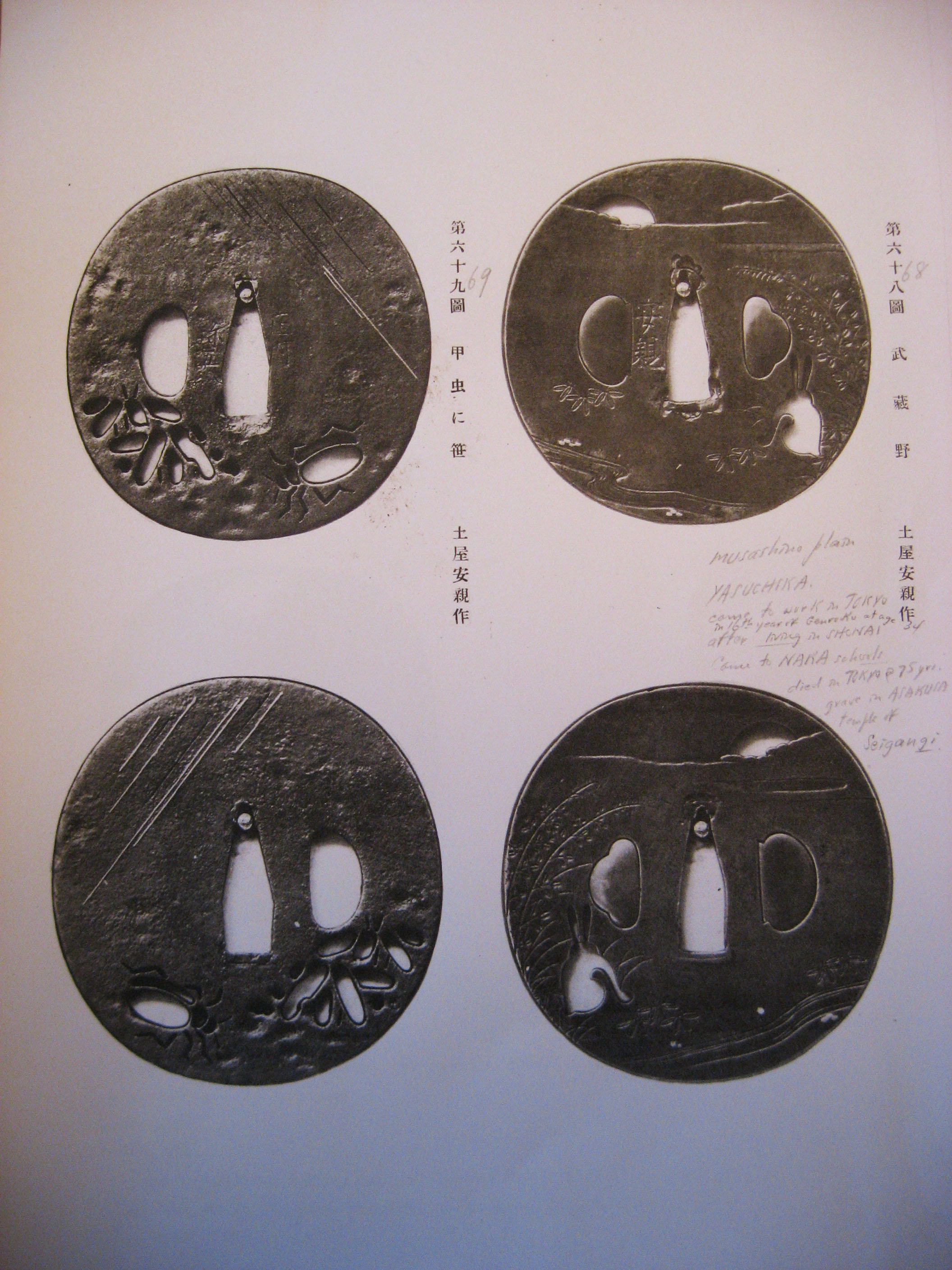
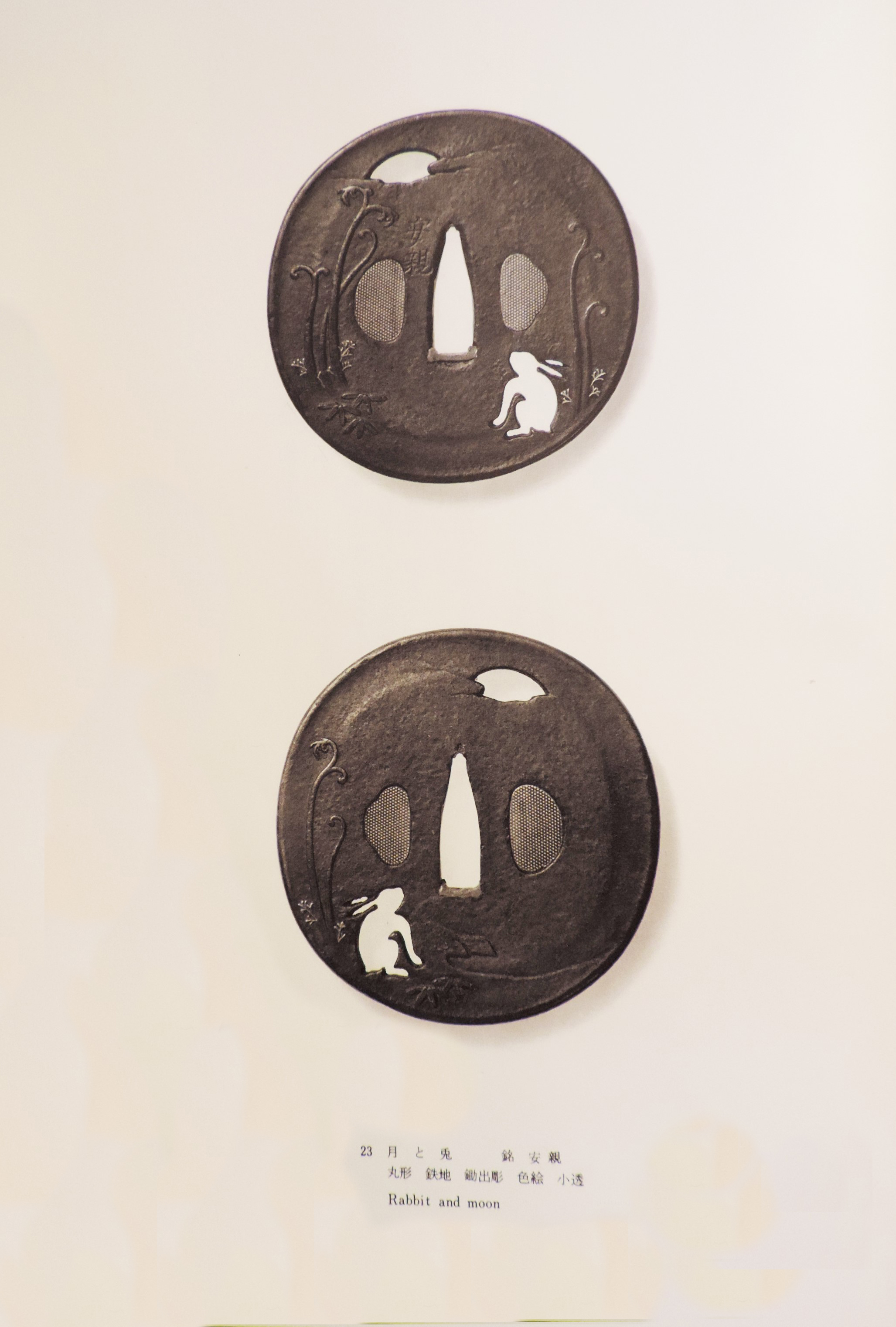
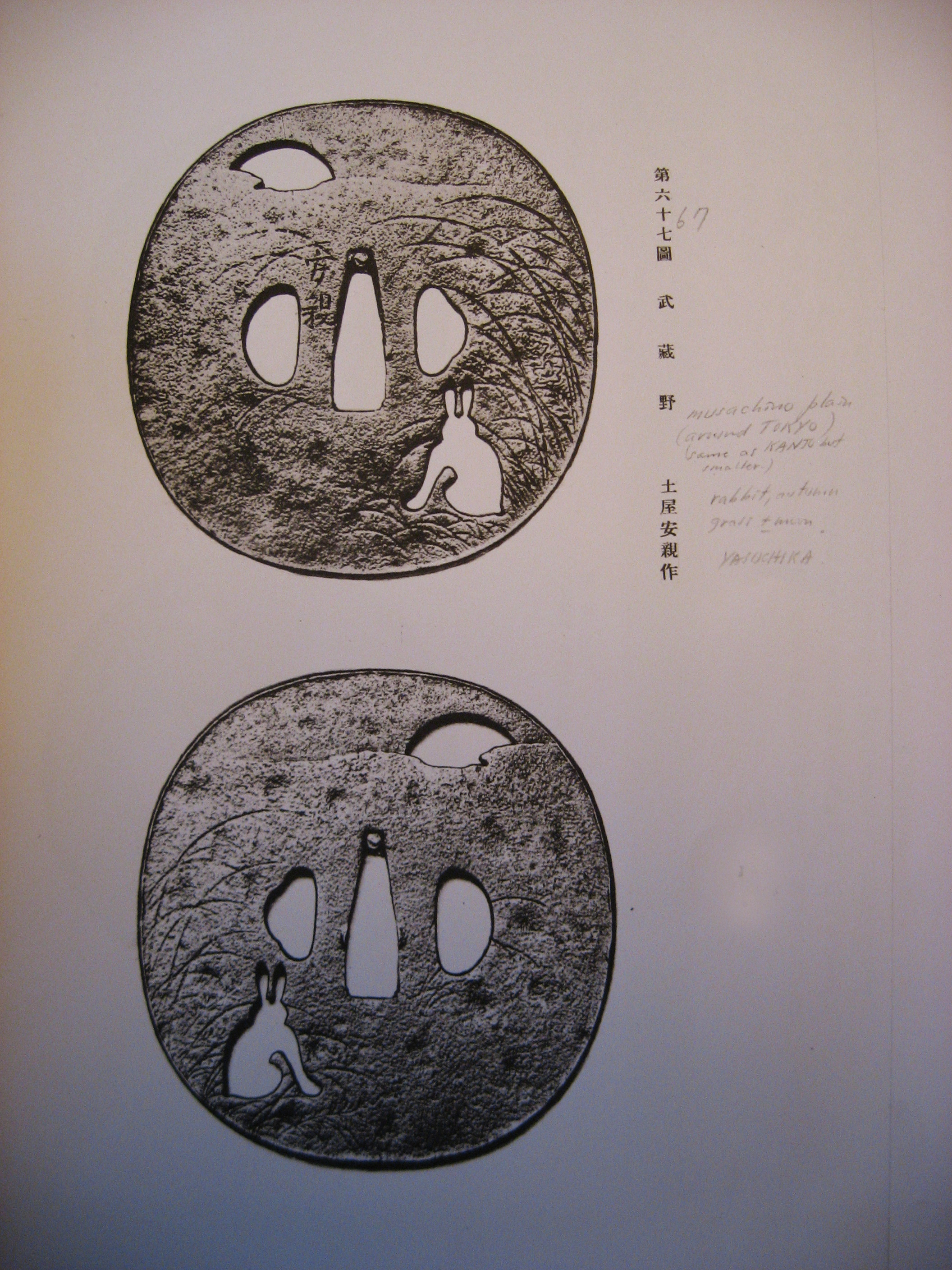
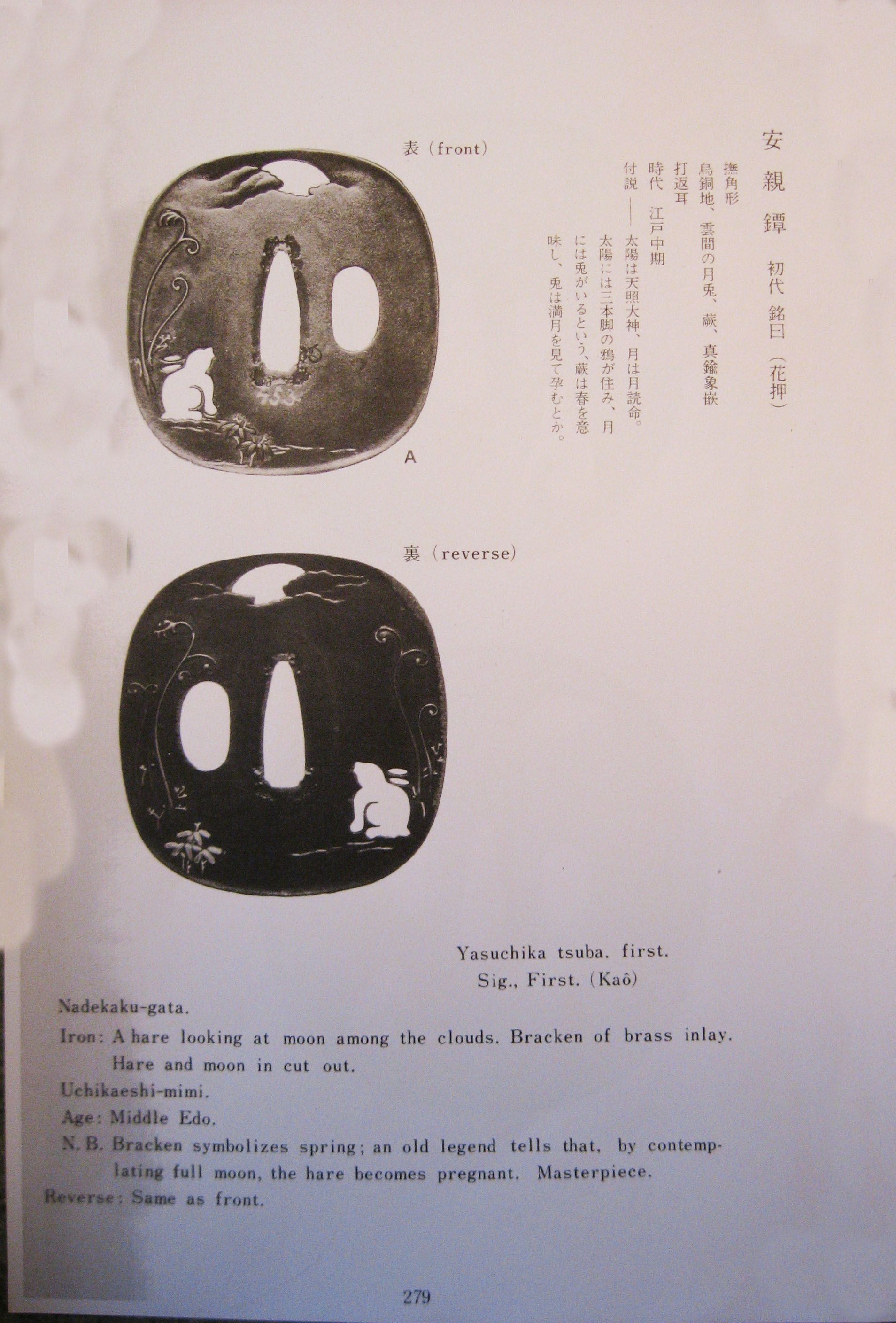
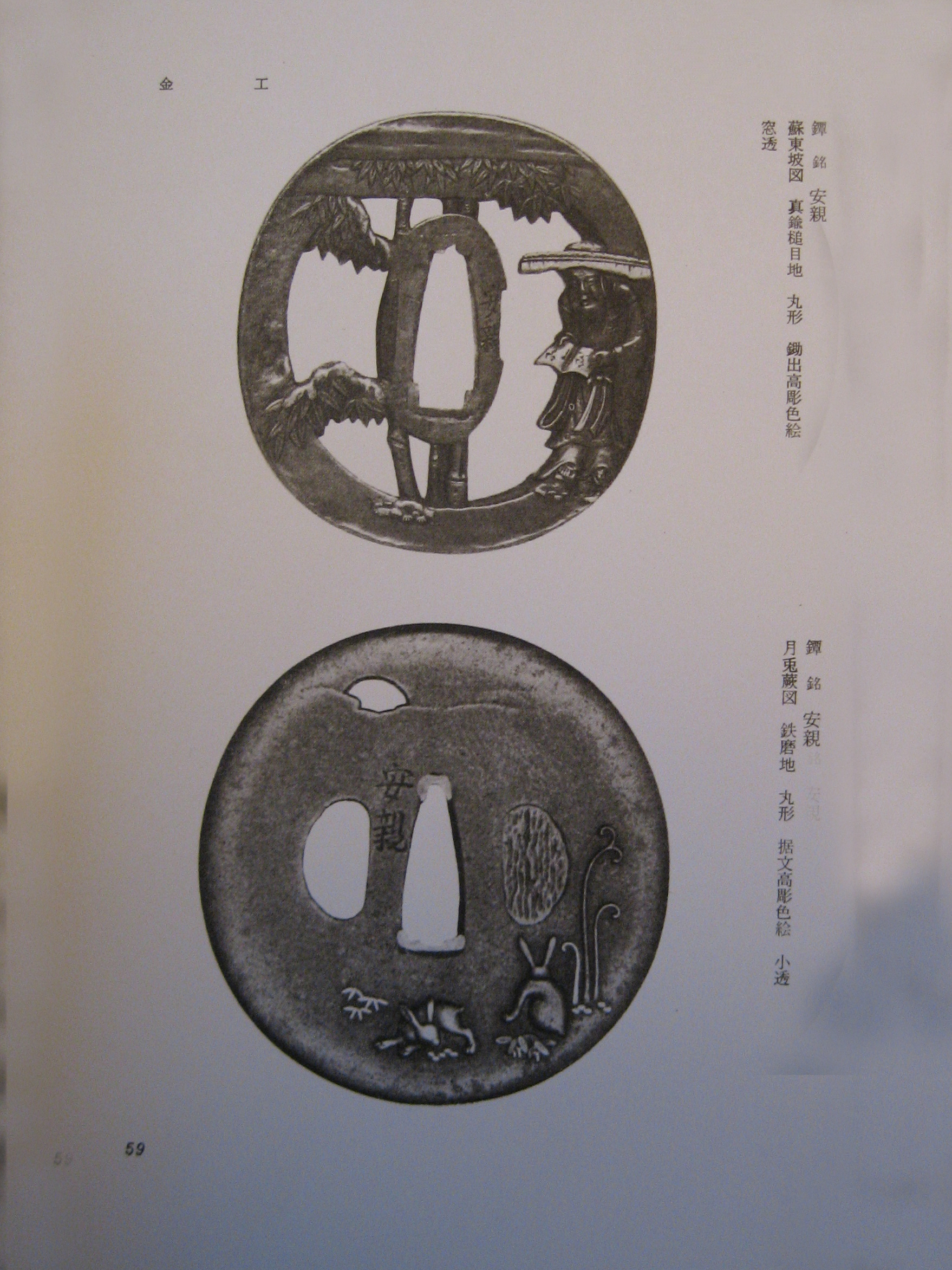
| Return to R. Haynes Literary
'Works' OR
Home
Page Email to elliott@shibuiswords.com |